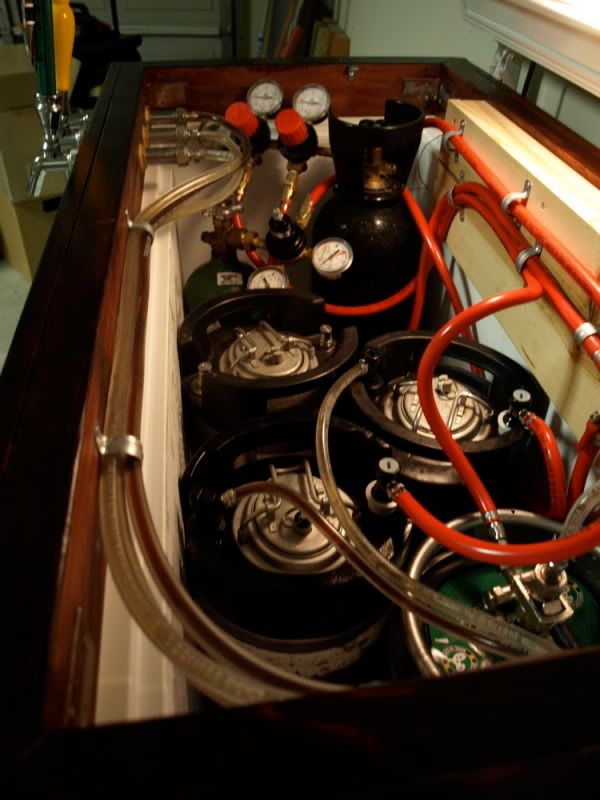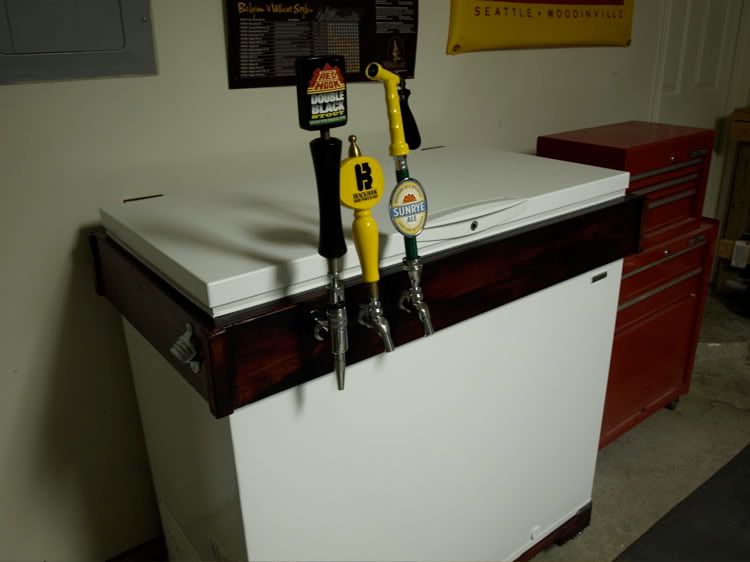I've got most of the setup...I've been dispensing Guinness (not homebrewed)...with the setup. My next homebrew stout...I'm going to "nitrogenate" with beer mix.
Here's what I'm planning...
I'll put a stone on the short dip tube...as close as I can get it.
I'll fill the tank with beer...about 7/8ths the way...staying clear of the stone.
Pressurize the tank...bleed the tank a couple of time...just to clear off the head space of any oxygen. Pressurize just enough to ensure a seal.
Chill the tank
Flip the tank inverted...and slowly bring the gas pressure up to 30 psi...when the gas stops flowing...flip it upright again.
Wait 2 hrs
Vent...but leave enough pressure to remain sealed.
Flip inverted...slowly bring pressure up to 30 psi...when gas flow stops...right the tank again.
Wait 2 hrs.
Dispense through stout faucet...
Repeat the bubbling nitrogen-carbon dioxide blend through the stone...and waiting 2 hrs...as necessary to get the smooth, creamy, head...the low carbonated flavor, and cascading effect that I'm looking for. Then just leave it attached at 30 psi.
You'll find that the Stout Faucet holds a bit a liquid above the restictor plate...which drips out over time. Perfect breeding ground for mold to form. So after each use...you'll have to unscrew the spout...and rinse with clear water...let dry a bit...and replace, to prevent a mold plug from forming around the flow straightener.
If you aren't pouring Black & Tans...go with whatever. But I think the nitrogenation hassle you go through with the stone will pay dividends when you pour a black and tan. I don't have a mass spec to test the liquid...but I would imagine some, however miniscule amt. of N2 goes into solution...would certainly help keeping the density different than the lager or ale that you're pouring over.







